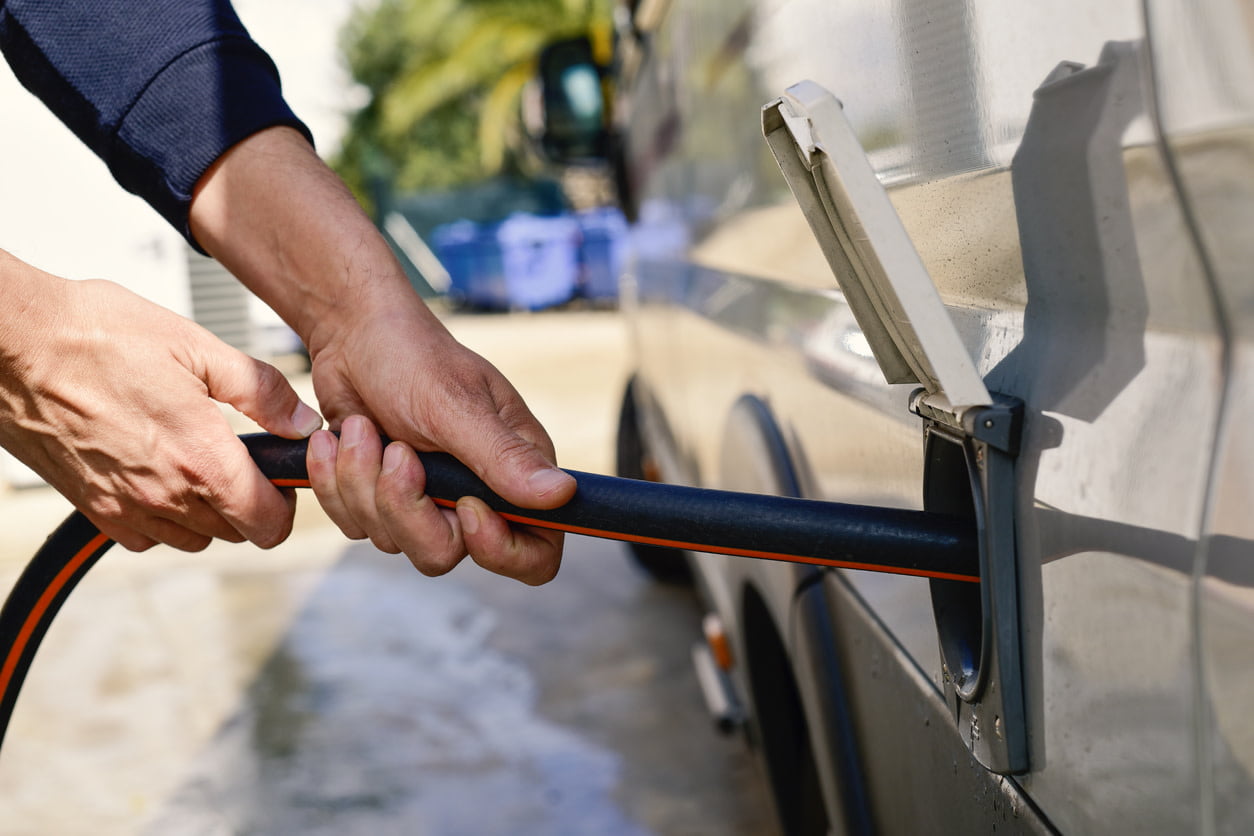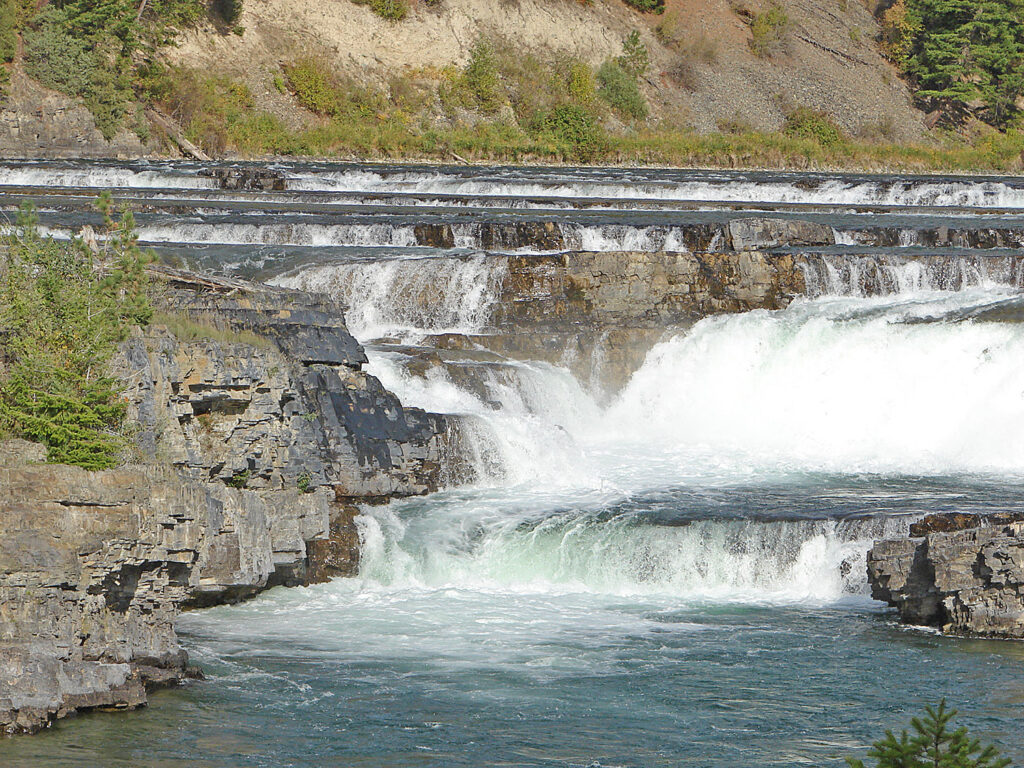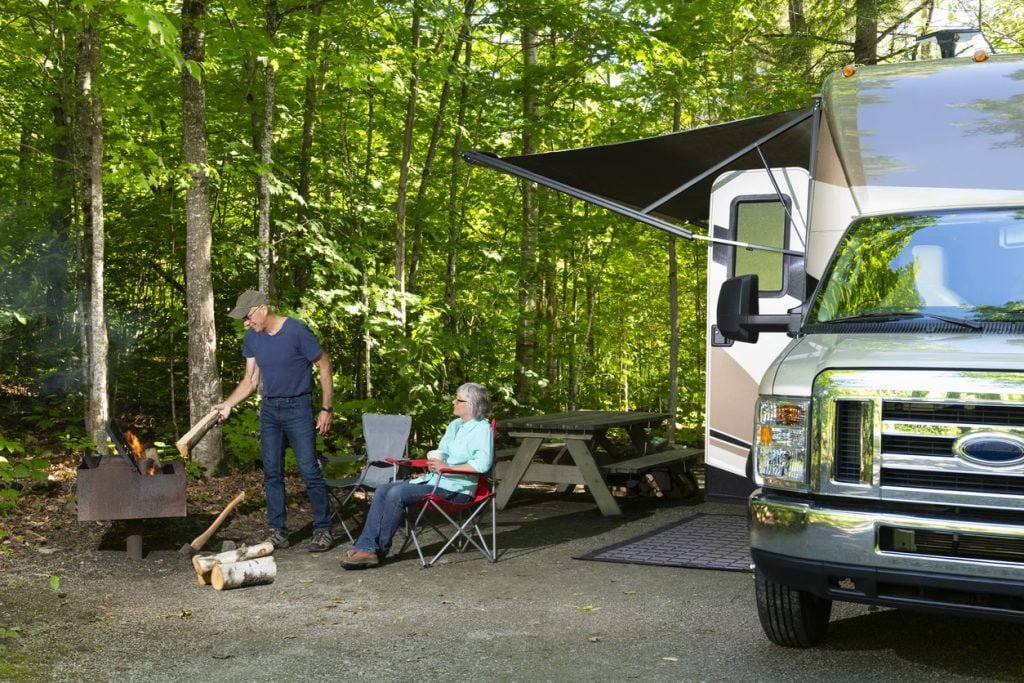If you have a broken water line in your RV, you must promptly complete repairs before continuing on your travels. Ignoring even the slightest leak can result in a huge mess and severe water damage in a short period of time. Mold could even start to grow, sidelining your vehicle for the travel season and keeping you from attending all your favourite RV events.
A leak usually sends water cascading across your floors, but if it doesn’t, you will know there is a problem when your pump kicks on and only the slightest trickle comes out of the faucets, if any at all. Either way, if you are DIY-savvy, you can quickly fix the issue on your own. Here’s how.
Find the Break in the Line
Upon suspecting a leak, it is important to turn off the water and seek out the source right away. That way, you can clean up the water before it causes damage and get started on the repair. If you do not see water running out onto the floor or under the RV, you will need to do some investigating to find the source.
Check the storage area near the water pump first, then try to follow the lines the best you can through your RV. Remember to look in cabinets near faucets and in all the storage areas. Any and all service compartments need a good look through as well to make sure you do not miss anything.
Once you pinpoint where the leak is likely coming from, sop up all the water with a rag. Then, have a helper hook up the water again so you can assess the severity of the leak and verify other areas that are not leaking. Although breaks in the line happen most often, fittings can leak, too. You need to check these components for leaks by observing them while the water is on. Turn the water back off after finding and observing the leak so you can start the repair on the line.
Pick Out the Right Fitting
With an understanding of where it is leaking and how badly, you can pick out the right fitting type and size. If you have a simple break in the line, you can use a compression union fitting.
The easiest way to make sure you get the right size compression union fitting is to cut out the section ahead of time. Whether your RV uses PEX or copper tubing, use a multipurpose pipe cutter to make a clean, straight cut on either side of the damaged area.
Then, take that piece to the hardware store and see which fitting will slide inside. You want a relatively tight fit, but you shouldn’t have to force the tubing through the hole. As you tighten down the centre section, the ends will clamp down on the tubing and keep it firmly in place.
If you are dealing with a leaking elbow fitting, however, just remove it from the system by unscrewing the lock nuts. Then, compare it to the others at the hardware store. You should find a direct replacement, but if you don’t, ask an employee to help you track it down. If the fitting uses threads, make sure to pick up thread seal tape while you are there.
Install the Fitting Between the Cut Ends
With your fitting in hand, all that is left to do is install it. For compression union fittings, you can just slide the tubing through the holes as far as they will go. Then, take a wrench and tighten down the nut in the middle. Test that the tubes are securely in place with a gentle tug and that’s it. You should now have fully functional water lines.
When replacing elbow fittings, wrap seal tape around the threads a couple times to create a gasket of sorts. With that, you can screw the lock nuts back in place with confidence that the fitting will not leak.
Test the System and Watch for Leaks
With everything back in place, you can have your helper turn the water back on for the big test. Keep close watch on the repaired areas to check for even the tiniest hint of water. If all is well there, check that the faucets operate as expected. With that, you can rest assured that your efforts resolved the problem and you are likely fine to move ahead with your RV adventures.
You just never know when you will need to complete RV repairs to keep your rig on the road. So, tuck the multipurpose pipe cutter and wrench in your onboard toolbox for any water leaks that appear in the future. Now that you know how to handle them, you can make quick work of the repairs and keep them from disrupting your adventures.
For even more peace of mind, add a few common water line fittings to your toolbox — and check in with us at Explorer RV Club to learn about getting a group discount on emergency roadside assistance. You just have to join the club to get access to this awesome benefit and many more.




